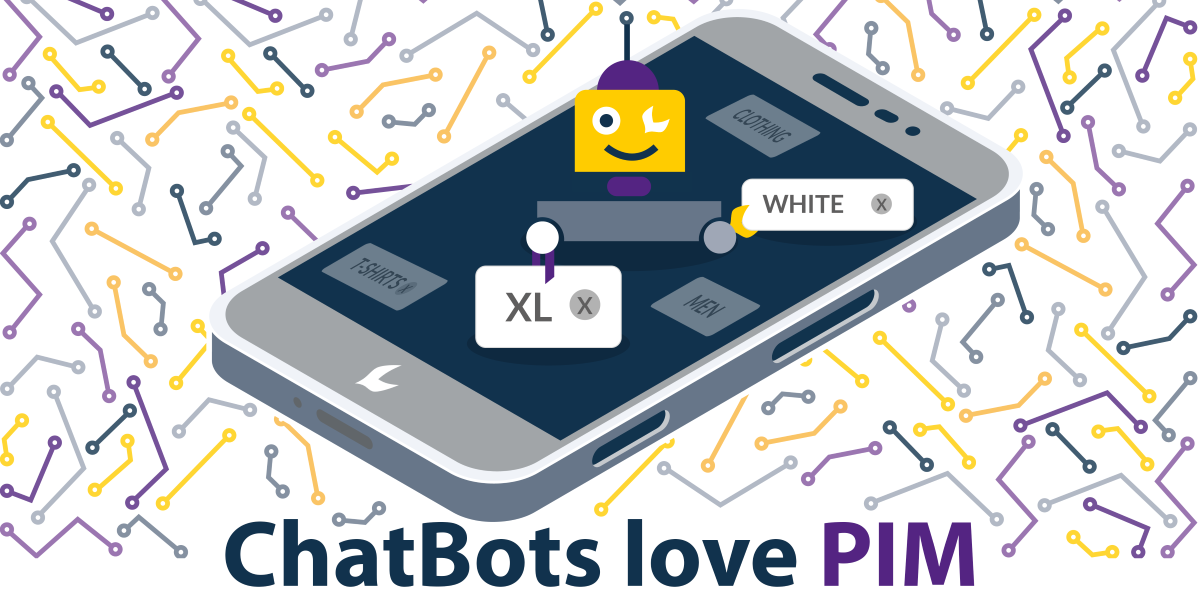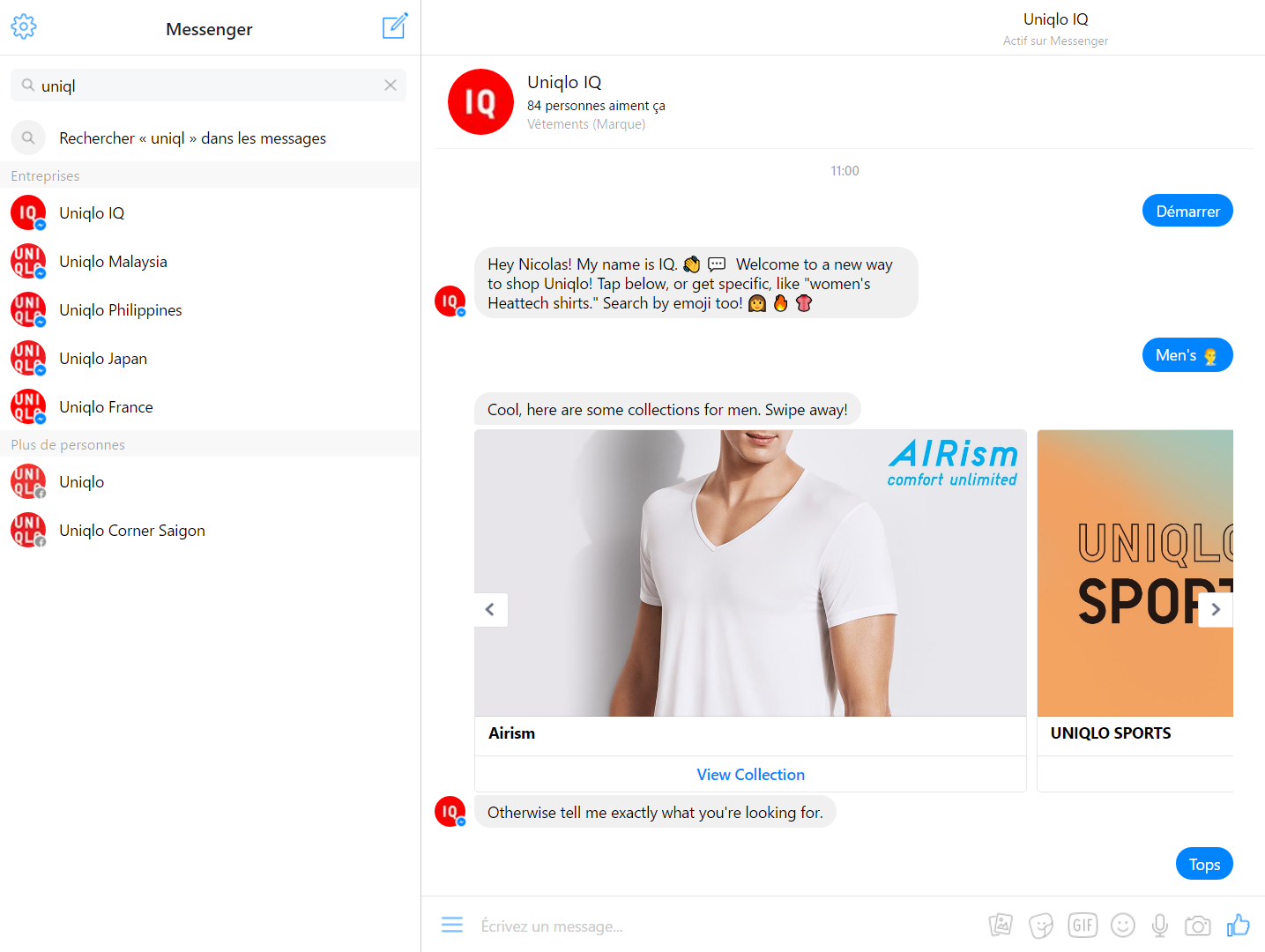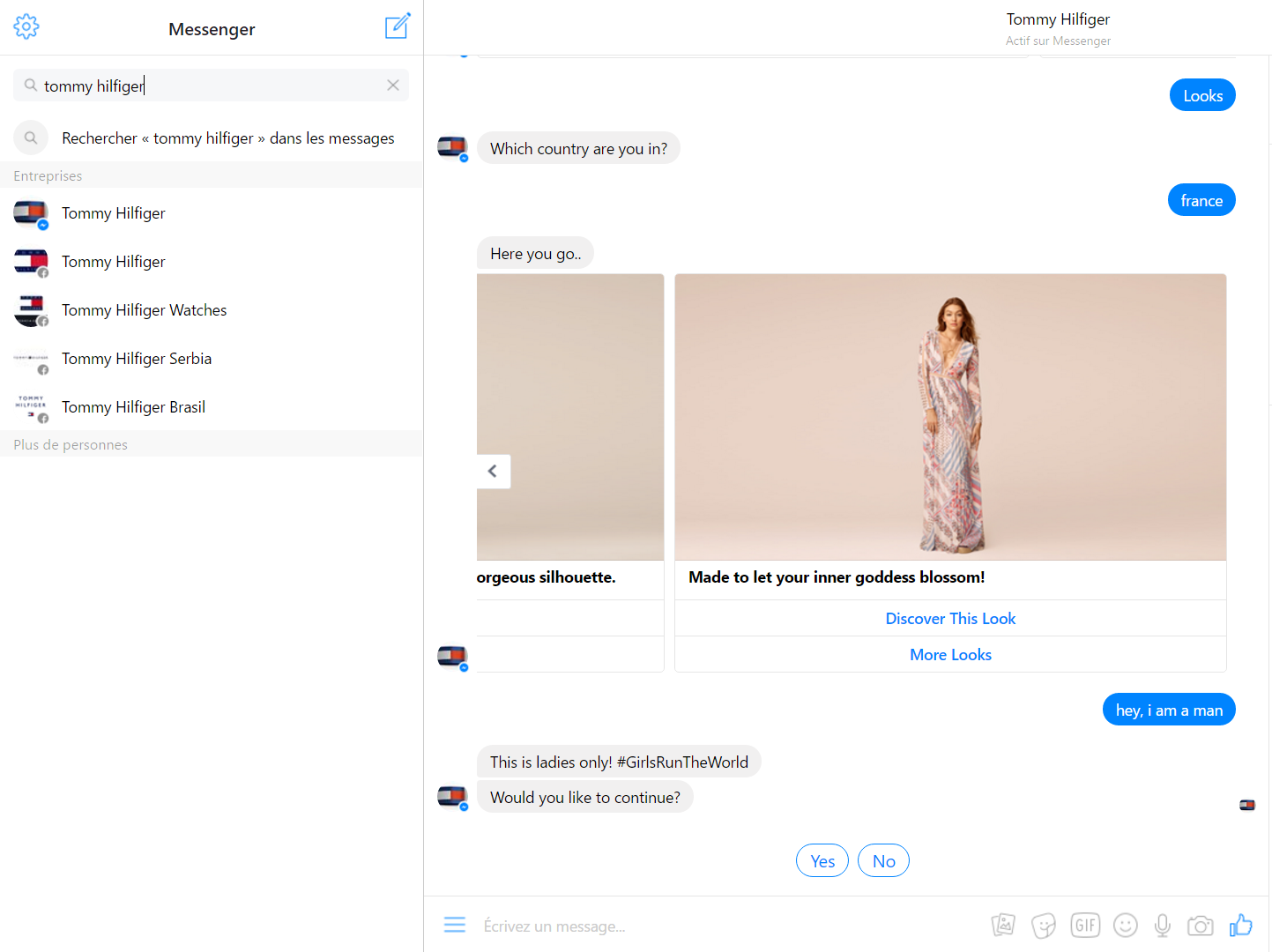Chatbots are all the rage in retail management and technology circles.Chatbots create a dialog with humans that simulate a natural conversation and he...

Keywords
Chatbots are all the rage in retail management and technology circles.

Let’s talk with the Uniqlo’s Chatbot – source: Uniqlo’s Chatbot within Facebook Messenger

Of course, chat has been utilized with varying levels of success for several decades. However, recent advances in Artificial Intelligence (AI) have fostered increased sophistication of AI-powered chat agents which make them vastly more effective than the Clippy’s of the past.
What’s more, a gold rush from AI-enablement startups (facilitated by the separate rush toward cloud computing) has quickly democratized the infrastructure required to deploy these sophisticated User Interfaces. “Chatbots as a service” provide retailers of all sizes with the ability to quickly build sophisticated chatbot services without having to pour millions into R&D efforts or learn a programming language. Instead, merchandisers can program behavior via visual diagramming tools and other easy-to-use systems. The chatbots then enter a virtuous cycle of improvement (either machine-learning or not) as you learn which chat strategies result in sales and which end in abandonment.
The result has been an explosion of chatbots being deployed as retailers explore the potential of this exciting new channel. Just six months after Facebook announced their messenger platform, over 34,000 chatbots had been deployed!
One of the great advantages of chatbots is how flexible they are to deploy. Chatbots can be utilized nearly everywhere… on retail websites, within advertising units, on news feeds in locations such as Facebook, on messaging platforms like texting, Snapchat, Slack, and Facebook Messenger, or even from voice systems like traditional phones or Siri/Alexa/Cortana/Google Assistant-enabled devices.
Okay so you’re excited about the possibilities of your own retail chatbot but what do you do next?
Obviously, you’ll want to think about how to design a magical customer experience, think about where a chatbot could actually add value, and explore the various technical options. But once you’ve played around with those high-level mental toys, it’s time to get serious and think about the product information matrix that will underline the entire customer experience.
Yes, that’s right. We just brought the topic around from one of the sexiest new technologies back to product information management. And while we probably do think about product information management (PIM) more than is healthy… it really is at the heart of every successful retail chatbot strategy. Here’s why: your chatbot is just simulating a human intelligence, it doesn’t really have one. So it needs a very organized and structured path to your product catalog in order to help your customers connect with the right product or solution for them.
To see what we mean, think about this example:
Nick, a 36-year old hipster, living in Los Angeles, sees a picture of his twin brother wearing an awesome new shirt in his Facebook feed. Nick’s brother lives in Paris, and Nick wants to post a photo of himself wearing the same shirt in LA so he can make his mom back in New York laugh at her long-distance twins… So he engages your chatbot via Messenger on his phone to buy a shirt.

Let’s talk with the Tommy Hilfiger’s Chatbot – source: Tommy Hilfiger’s Chatbot within Facebook Messenger
The chatbot needs to walk your prospective buyer through the process of describing the style of the shirt, the color, the size, the price, your localization and the availability from various fulfillment centers.
To make this a successful customer experience, you’ll need some serious plumbing in the form of product information, such as:
Of course, a good salesperson would cross-sell Nick on some related products once he’s decided upon and purchased his shirt. Your chatbot can too… if your product information is already well organized. Otherwise, they’ll just get confused and maybe try to sell him a platypus or some other non-sequitur.
The reality is that with chatbots, the search is no longer being managed by a person, but by a machine and machines perform best when given highly structured, detailed, and accurate data. And this is the province of product information management.
PIM is the enabling technology for everything that’s next in retail… including chatbots.
Give us a shout if you want to talk about how we can power your next strategic merchandising moves by leveraging the full potential of product information management.

Point-of-Sale systems are transforming how businesses operate — from processing payments to tracking data and improving customer service. Discover...
Read more
SAP Hybris is a powerful eCommerce and customer experience platform, but its full potential is often limited by inefficient product data management...
Read more
Product content syndication is transforming the way brands distribute and manage product data across multiple sales channels. By automating updates...
Read more